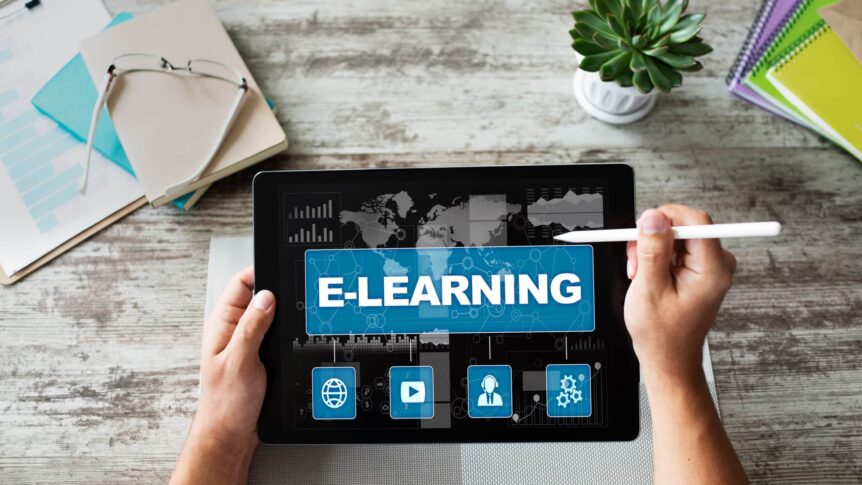Why E-Learning
Good day! I’m Damian from Capytech, and today I’m going to talk to you about why you might choose to use e-learning and outline some of the benefits that you might acquire if you use it to learn in your organization. I’ve got five key points that you might find are useful to why you might choose to adopt e-learning.
First of all, it’s flexible, so learners can go through learning when it’s a time that appropriate to them on a location that is suitable for them and are able to have a much greater amount of flexibility that if they had to go into a classroom at specific time at a specific location. This is particularly relevant, of course, to maybe a larger organization. You’ve got your training center, then they don’t need to travel to that training center. They can do it during their breaks on the metro to work and so on. It also gives more flexibility to the instructors or facilitators, because if they are then able to deliver learning online, they don’t have to then deliver perhaps the same programs over and over again like we see with a lot of compliance and onboarding.
The next key reason is that e-learning is efficient. We typically see a time saving 40% to 60% in learning time when converting programs from in classroom training to online training. And that doesn’t even consider any travelling times and so on. That might be a part of it. The other part as well is that learners can learn at their own speed so they can go quickly or as slowly as they want to, and they can repeat content if they need to understand what it is that they’re trying to learn during the course. When in a classroom, of course, you’re often dictated by the slowest learner or the person with the least amount of experience. So even if you’ve got a high level of background in the content, you need to tailor it for the program is going to be catered for the person that has perhaps the least amount of experience, so you can go through it much more quickly than what you would in a classroom.
Another key reason and why we work with a lot a larger organization is it scales very well. In a classroom, you might be able to fit, say 20 people, perhaps 30 people even. And then if you’ve got to roll out a compliance program that you need to track and be confident that people understand it, and you’ve got a thousand people, then pretty quickly/ That can add up to a heck of a lot of classroom time that you need to have facilities for you need to have instructors for, and so on. E-learning, once it’s developed, you click a button and roll it out to thousand or tens of thousands of people, as many of our clients already do. Scaling a program very quickly is something that is vital. Then when it comes to updating the program, then we can change a few slides, change the policies, whatever it might be, and then again, one click, be able to roll that out to everyone rather that having to perhaps retrain them in a conventional classroom setting.
Another area is that it’s trackable. When you combine the e-learning content with a learning management system, lms, then you’re able to have a high level of confidence about who’s going through the training, what they scored on, the training itself, if they got the pass mark, when they need to do the training again, and so on. Many, many L&D departments run their training off spreadsheets. Now, if you’re a spreadsheet guru, then great. But often that makes life a bit difficult and can be very time consuming as well. Using an LMS and typically scorm compliant or Xapi compliant learning modules, you can track exactly when people have gone through content, when they’ve completed, and what they achieved during it.
Last point is that it’s consistent. And what I mentioned, why I mentioned this is that people joining an organization one week apart might have very different experiences. Perhaps the star presenter was on leave or away. Maybe the person that had to go through the onboarding presentation was busy or not familiar with the materials. You might have different levels of quality of training depending upon your organization, between one city and another, and so on. By delivering the learning content using e-learning then you can be 100% confident that everyone’s going through the same level of understanding and the learning will have an equal amount of effectiveness for everyone, regardless of where they are and when they started.
So those are five key reasons why you might consider e-learning. The question is, would e-learning help you? Would it help you deliver your training more flexibility? Would you benefit from having trainers more efficient at scale very quickly that you could easily track without the need for spreadsheets? And that allows you to have a much more consistent delivery to off learning than what you might be achieving now?
And if the answer is yes, then of course feel free to get in touch. Thank you.
